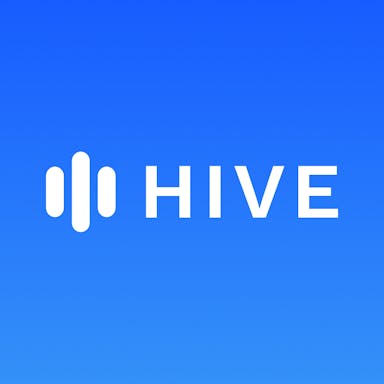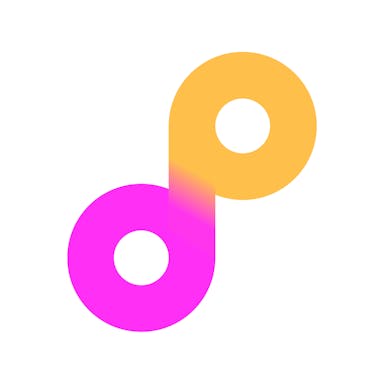Thesis
Generative AI is a category of AI that uses machine learning to generate new content instead of solving an existing problem or analyzing existing data. Since the release of OpenAI’s GPT-3 in 2020, generative AI has evolved from rudimentary short-to-medium-form copywriting capabilities into longer-form, human-like dialogue in 2024. The wide-scale adoption of generative AI could signify significant growth in the global economy. In April 2023, for example, generative AI was projected to increase global GDP by 7% and global productivity growth by 1.5% in the following ten years.
One of the major barriers to wide-scale adoption of generative AI is that out-of-the-box usage of the underlying models like GPT-4 requires both knowledge of how to communicate with the model (prompt engineering) and the capability to provide suitable examples for the model to narrow in on the domain of use (fine tuning). Moreover, these base models aren't tailored for specific industries. This can lead to suboptimal results when using AI for tasks in specialized areas like healthcare, marketing, finance, or tech. As a result, businesses and professionals in these sectors may find it challenging to effectively integrate generative AI into their workflows without investing in significant customization and training efforts. Generative AI therefore requires an application layer to be built to realize the underlying potential of generative AI for real-world use cases.
Jasper has built one such application of generative AI specific to marketing — enabling the production of everything from AI-generated blog posts to ad copy and creative design. Having launched in January 2021, the company had raised a total of $131 million as of February 2024. Its AI copilot, powered by a proprietary AI engine (which includes, but is not limited to OpenAI’s GPT-4 model), is used by over 100K teams as of February 2024.
Founding Story
Jasper was founded in 2021 by David Rogenmoser (former CEO), Chris Hull, and John Morgan (former CTO). In 2014, after attempting to launch two SaaS companies that ultimately failed, the trio started a digital marketing agency. In 2017, the agency evolved into Proof, a tool to add social credibility to websites through live engagement widgets. The founders were accepted into the YC18 batch for Proof. In March 2018, the company raised a $2.2 million seed round. In October 2020, however, Proof’s growth stalled. As a result, the founders laid off half the team.
In October 2020, following the layoffs, the team started exploring OpenAI’s GPT-3, a large language model. They became intrigued by the potential for marketing applications of generative AI. In January 2021, they launched the first version of Jasper, which used natural language generation based on templates to assist with copy for Facebook and Google ads. The company, named Conversion.ai at the time, reached $42.5 million in annual recurring revenue for 2021.
By January 2022 the team had settled on the name Jasper and expanded the product capabilities to go beyond ad copy. Jasper’s templates have since continued to expand and, as of February 2024, have developed into what it calls an “AI copilot for enterprise marketing teams” that can speed up the content creation process for marketers.
In September 2023, both Rogenmoser and Morgan stepped down as CEO and CTO respectively following staff cuts and an internal valuation reduction of 20% (according to former employees.) Rogenmoser was replaced by Timothy Young, former president of Dropbox, but remained as chairman of the board as of February 2024.
Product
Jasper is a generative AI application to help marketers create marketing material and run marketing campaigns. Its features are powered by the Jasper AI Engine, which consists of a blend of proprietary models developed in-house, as well as a selection of third-party models from entities like OpenAI, Google, Anthropic, and others. The Jasper AI Engine is designed to determine the most effective combination of these models to address particular use cases or industry-specific needs.
One of the key functions of Jasper's AI Engine is to transform generic language patterns, such as those generated by large language models like OpenAI's, into content tailored to specific applications. For instance, Jasper can take the general language output and refine it to meet the demands of marketing or business-related tasks.
AI Copilot
The Jasper AI Copilot is a suite of tools designed to help enterprise users across multiple aspects of marketing as of February 2024, including Company Knowledge, Team Acceleration, and AI-Assisted Content.
Company Knowledge
Company Knowledge helps integrate company-specific information into content creation. It enables the AI to root content in the company's strategy, positioning, and performance. Key features include a brand Voice & style guide to ensure content aligns with the company's style and voice; a knowledge base to upload important company information; and performance tools that offer suggestions and insights based on content performance trends.
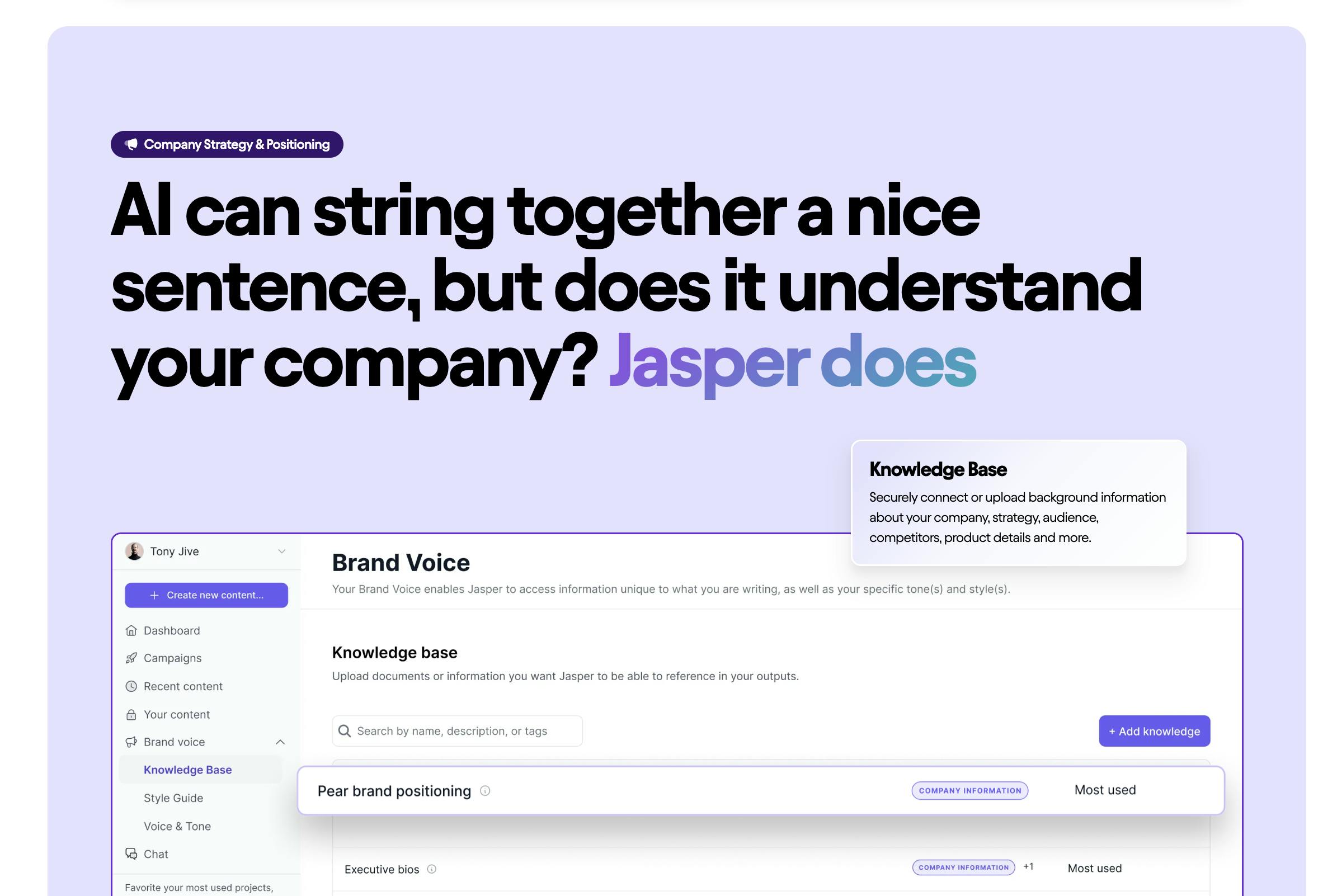
Source: Jasper
Team Acceleration
Team Acceleration is designed to enhance team collaboration and efficiency in content creation. These features include automated project management tools like Kanban and calendar views; content creation and repackaging capabilities to adapt existing content into new formats; and review and optimization tools to integrate edits and ensure content aligns with style guide standards.
AI-Assisted Content
AI-Assisted Content helps speed up content creation using generative AI. Its key feature is AI assistance for adapting content to different audiences and formats. It also features a Chrome extension for integrating Jasper wherever content is created; and campaign management tools for transforming content into multi-channel campaigns.
Jasper also has its own text-to-image AI generator, dubbed Jasper Art. This feature produces 2K pixel images based on the user’s text prompts that are royalty-free for commercial use, and come with no watermark. Jasper Art has no usage limit and is included only in the “Pro” and “Business” plans.
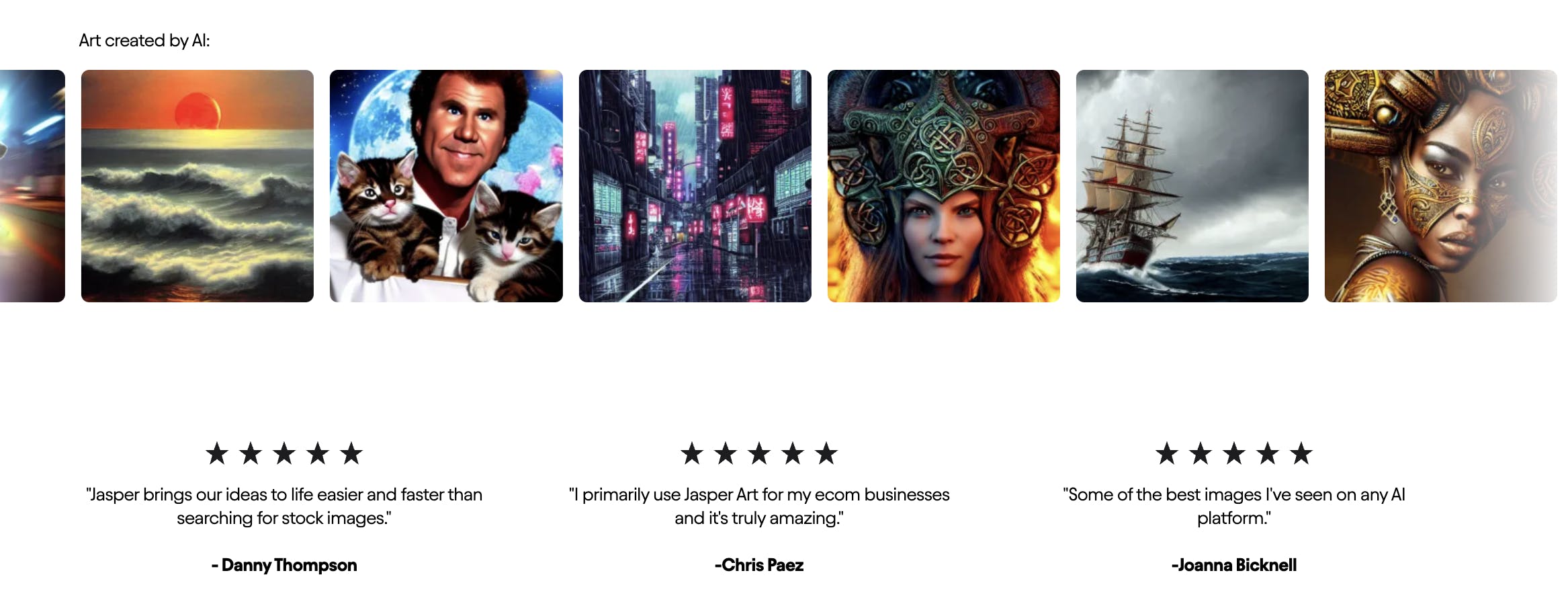
Source: Jasper
Jasper also has a suite of Analytics and Insights tools. These are designed to improve marketing content performance with AI. Key features include Content Performance, which would provide users with AI recommendations based on results derived by their content; and One Click Optimization, which would allow users to “turn recommendations into quality improvements in a single click.” These tools were set to be available in Q4 2023, but are not as of February 2024.
Jasper also offers an AI chatbot product designed to help users generate ideas and revise content.
Jasper Everywhere
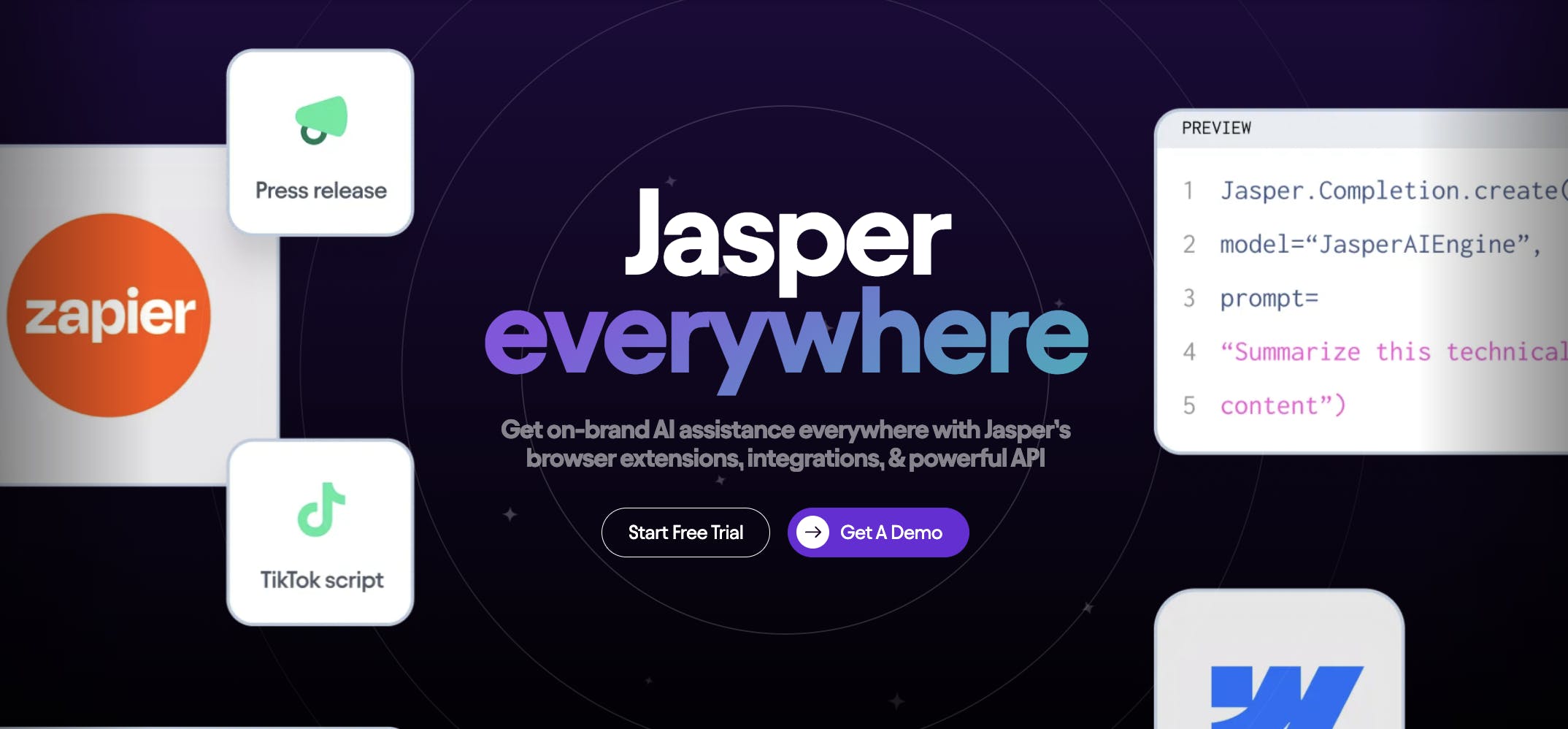
Source: Jasper
Jasper Everywhere is a suite of tools external to the Jasper ecosystem, including browser extensions, integrations, and API.
Browser Extension: integrates Jasper's AI writing assistance into web browsers, enabling users to create and edit content directly on various online platforms. It offers over 60+ writing templates and facilitates content ideation, drafting, and editing. Key functionalities include enhancing readability, adjusting sentence length, and altering tone. The extension is compatible with Chrome and Edge browsers.
Jasper API: allows integration of Jasper's AI capabilities into custom platforms or content management systems. The API is suited for various use cases, including summarizing long-form content, enhancing user content, bulk content generation, and revamping old content. As of February 2024, the API was in beta. Jasper claimed to guarantee “99.99% uptime” on its API as of February 2024.
Integrations: Jasper offered eight integrations as of February 2024, including integrations with Webflow, Google Sheets, Google Docs, Docs, Zapier, and Make.
Market
Customer
Jasper’s customers are marketers who typically require the production of large volumes of novel content consistently. For example, one Jasper customer noted in a December 2022 interview that:
“[W]e have to create content for all [our] cities and regions and points of interest. Then you have to refresh it every three to six months, otherwise Google will kind of penalize you for stale content. So there's a lot of words for each of those pages and those pages need to refresh on regular basis…that's a primary use case.”
Jasper’s cheaper pricing tiers, including the “Creator” & “Pro” tiers, are targeted at the long tail of content marketers working at smaller companies. These customers often don’t have the scale to build templates and copy in-house, so they instead automate or accelerate that process with Jasper.

Source: Jasper
The “Jasper for Business” pricing tier, on the other hand, targets enterprise customers, allowing for easier collaboration across large teams and tailored pricing. Existing customers in this market segment include companies like HubSpot, SentinelOne, Amplitude, and Retention. As of February 2024, Jasper had over 100K customers.
Market Size
The generative AI market was valued at $43.9 billion in 2023, and as of August 2023 was expected to reach $668 billion by 2030. This would imply a CAGR of 47.5%. Additionally, a June 2023 report estimated rising demand for generative AI products would generate approximately $280 billion in new software revenue by 2032. That same report estimated that in the 2023 — 2032 period, generative AI’s contribution to the overall spending in IT hardware, software services, advertising, and gaming would expand from under 1% to 10%. In June 2023, the total addressable market for generative AI software was estimated at $150 billion, approximately 21.9% of the global software industry.
Competition
Apps by Foundational Models
ChatGPT: ChatGPT is an AI language model developed by OpenAI, based on its GPT-3.5 model, and launched in November 2022. OpenAI was founded in December 2015, initially as a non-profit, with funding pledges from notable figures including Sam Altman, Peter Thiel, and Elon Musk. In 2019, OpenAI transitioned to a for-profit model, receiving a $1 billion investment from Microsoft. By 2023, OpenAI's valuation reached $29 billion, with total funding of approximately $11.3 billion over eight rounds. Projected revenues for OpenAI were over $200 million in 2023 and were expected to exceed $1 billion by 2024. As of November 2023, ChatGPT had over 100 million weekly users, and over 2 million developers building on its API.
Bard: Bard is an AI chatbot developed by Google. It was launched in February 2023 and made accessible to users in March 2023. Bard is based on Google's LaMDA (Language Model for Dialogue Applications) and was dubbed “a path to developing another product with two billion users” by Google's director in 2023. While the exact revenue of Google Bard is unknown as of February 2024, the potential for significant earnings is high given Google's extensive reach. In March 2023 alone, for example, Bard garnered 30 million monthly visits, primarily from the US and UK.
Midjourney: Midjourney is an AI image generator tool running on Discord as of February 2024. The company launched its first open beta in July 2022 and, as of February 2024, claimed to be self-funded. Its Discord server had 18.6 million registered members with 1.8 million active users as of February 2024. While not a platform designed to generate marketing-related images specifically, Midjourney competes with Jasper Art, Jasper’s tool for image generation.
AI Content Applications
Writer.com: Founded in 2020, Writer.com is a generative AI platform built for business use cases such as sales, marketing, operations, IT, and support. As of February 2024, the company had raised $126 million across three rounds of funding. In September 2023, the company raised a $100 million Series B from ICONIQ at a $500 million valuation. The company has primarily focused on large enterprises, with customers like Intuit, United Healthcare, UiPath, Spotify, L’Oreal, Uber and Accenture. As of September 2023, the company claimed to have grown revenue by 10x over the prior two years.
Copy.ai: Founded in 2020, Copy.ai is a generative AI marketing and sales tool. As of February 2024, the company had raised $13.9 million across three rounds. It raised an $11 million Series A round in October 2021 led by Wing Venture Capital, with participation from Craft Ventures, Sequoia, Tiger Global, and Elad Gil. By October 2023, Copy.ai had grown to over 380K users and reached $3.1 million in revenue from over 5K paying customers.
Writesonic: Founded in 2021, Writesonic is a generative AI platform for content creation, SEO, and AI Chatbots. The company had raised $2.6 million in funding as of February 2024. While smaller than Jasper in funding and size, Writesonic is also a Y Combinator company, participating in the YC21 batch. It raised a $2.5 million seed round in September 2021, led by HOF Capital with participation from Soma Capital, Rebel Fund, Razorpay, Broom Ventures, and Amino Capital.
Business Model
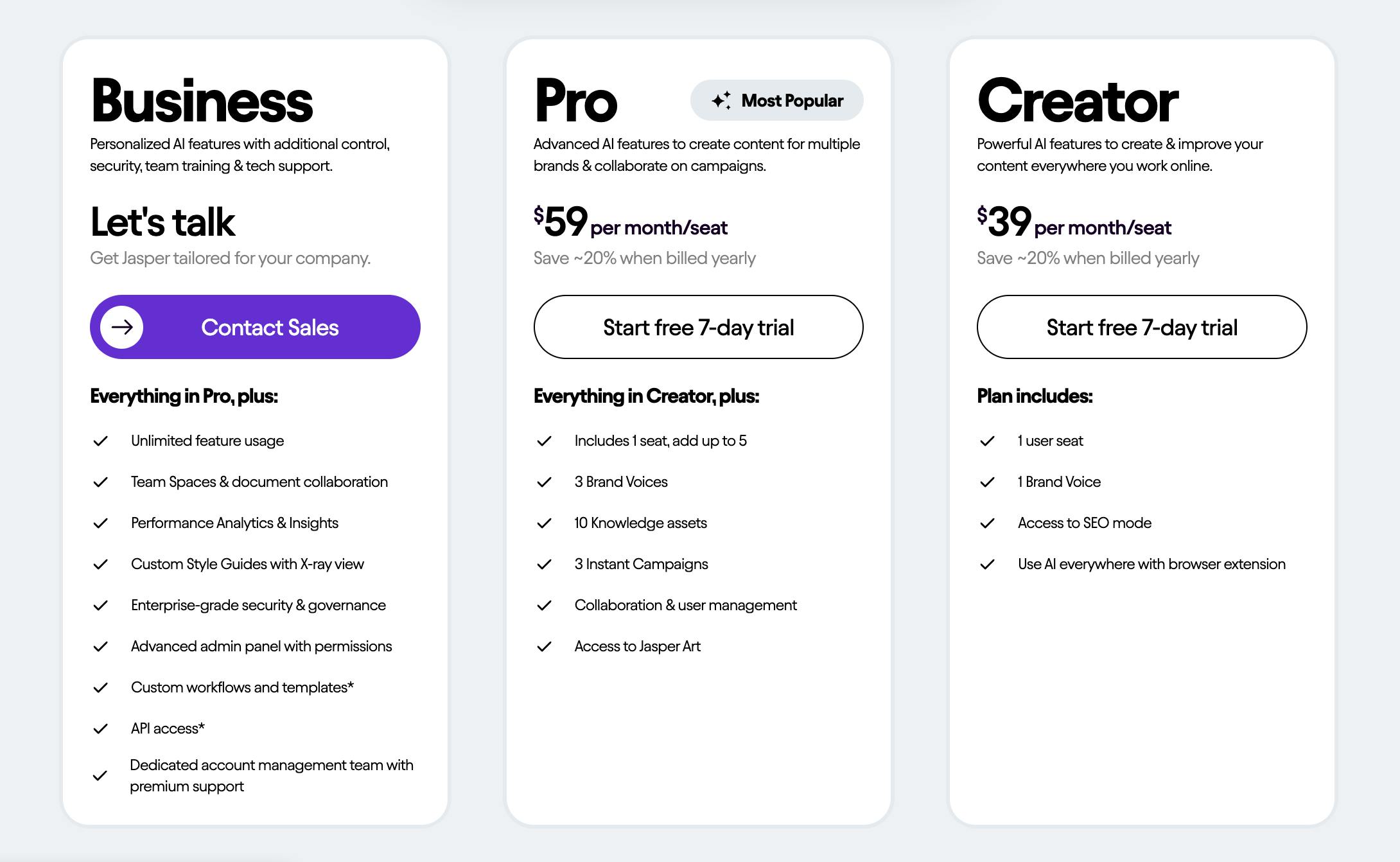
Source: Jasper
Jasper operates on a subscription-based pricing model with multiple tiers. As of February 2024, the “Creator” tier is priced at $49 per month, “Pro” is $69 per month/seat, and the “Business” tier has custom pricing. As of February 2024, customers who choose to be billed annually instead of monthly get ~20% off their plan.
Traction
As of February 2024, Jasper serves over 100K business customers, including Amplitude, Wayfair, Hubspot, and SentinelOne. This is down from its reported peak of 120K customers in October 2022. In 2022, Jasper’s annual recurring revenue (ARR) reached $80 million, a nearly 2x increase from its $42.5 million ARR in 2021. This growth was primarily driven by a customer base predominantly paying $80 per month for Jasper’s services.
In January 2023, Jasper announced to investors it expected to reach $140 million ARR by the end of 2022 and $250 million ARR by the end of 2024. However, in the summer of 2023, the company revised its 2023 ARR forecast downward by at least 30%.
Shortly after the introduction of ChatGPT by OpenAI — a low-cost competitor — in November 2022, Jasper redirected its business strategy. The company transitioned from catering to a diverse customer base of individual consumers and businesses to specifically targeting marketing teams within midsize and enterprise companies. In October 2023, the company announced that “enterprise business has accelerated to become the company's fastest-growing segment, with the sales team increasing total enterprise ARR by 4x.”
Valuation
Since its founding in 2015 (and its official launch in February 2021), Jasper has raised $131 million across two funding rounds as of February 2024. In October 2022, Jasper raised a $125 million Series A at a $1.5 billion valuation led by Insight Partners with participation from Coatue, Bessemer Venture Partners, IVP, and others.
However, in September 2023, the company reportedly cut its internal valuation by 20% due to slowing growth. Following this reduction, Jasper’s per-share value suggested a total valuation of approximately $1.2 billion as of February 2024.
Key Opportunities
Pivot Capacity and Speed
Jasper had an early start in establishing the role of AI in marketing, especially among the long tail of hobbyists and smaller agencies. This name recognition helped it create a brand identity and standardized workflow that gave its product an edge against later entrants. Namely, in October 2022 Jasper was selected one of Inc. 5000’s Fastest Growing Private Companies in America.
However, as was suggested by an undisclosed AI engineer in a July 2023 interview, many of the initial rounds of AI startups will not survive the rapid advancements in AI technology. The quick launch of Jasper Art sometime in early 2023 after the release of Stable Diffusion in August 2022 showed a willingness to move quickly in adding new product features. Similarly, Jasper pivoted to primarily targeting marketing teams within midsize and enterprise companies following the launch of ChatGPT by OpenAI and a slowdown in growth. This resulted in a 4x increase in total enterprise annual recurring revenue (ARR) for the company.
In this rapidly evolving environment, Jasper's ability to continue innovating and adapting to market demands and technological advancements will be key to its ongoing success and relevance in the Generative AI market.
Proprietary Data Moats
Jasper’s product offering provides various data collection mechanisms that can lead to constant improvement of its product suite. These mechanisms include their wide array of templates which give them data on how people use Jasper in their workflows, and feedback on how well the template is performing by usage, retention, and feedback. In fact, in a 2023 post, the company wrote:
“With more than 100,000 business users, the outputs you get from Jasper's AI engine will be more relevant to businesses and their customers.”
In addition, Jasper’s AI Copilot — including features across AI-assisted content generation, project management, and analytics — encourages more of a marketer’s work to be brought into Jasper, which translates into more data points that can improve model performance. This front-end data provides Jasper with an advantage over its direct competitors in tailoring products to its users.
Domain-Specific Model Advantage
In 2022, Jasper invested in a partnership with Cerebras Systems to develop a workflow for custom training models to increase its domain-specific utility. The goal was to build GPT-derived models specifically tailored to marketing applications and represented a bet that general-purpose LLMs such as GPT-3 would continue to have inherent limitations out of the box where the standards for excellence are high. Jasper’s data on different use cases gives it an advantage in building on top of foundational advances in LLMs and creating entirely new custom models that are more limited in scope, but deliver on the key metrics that matter to users.
Key Risks
Generalizable AI Models
Advances in large language models (LLMs) may result in custom-trained solutions becoming irrelevant, even for specialized use cases. In November 2023, OpenAI released a feature allowing users to create custom versions of ChatGPT. This functionally, for example, allows users to recreate the brand voice and on-brand AI assistant capabilities that serve as the cornerstone of Jasper’s service offerings.
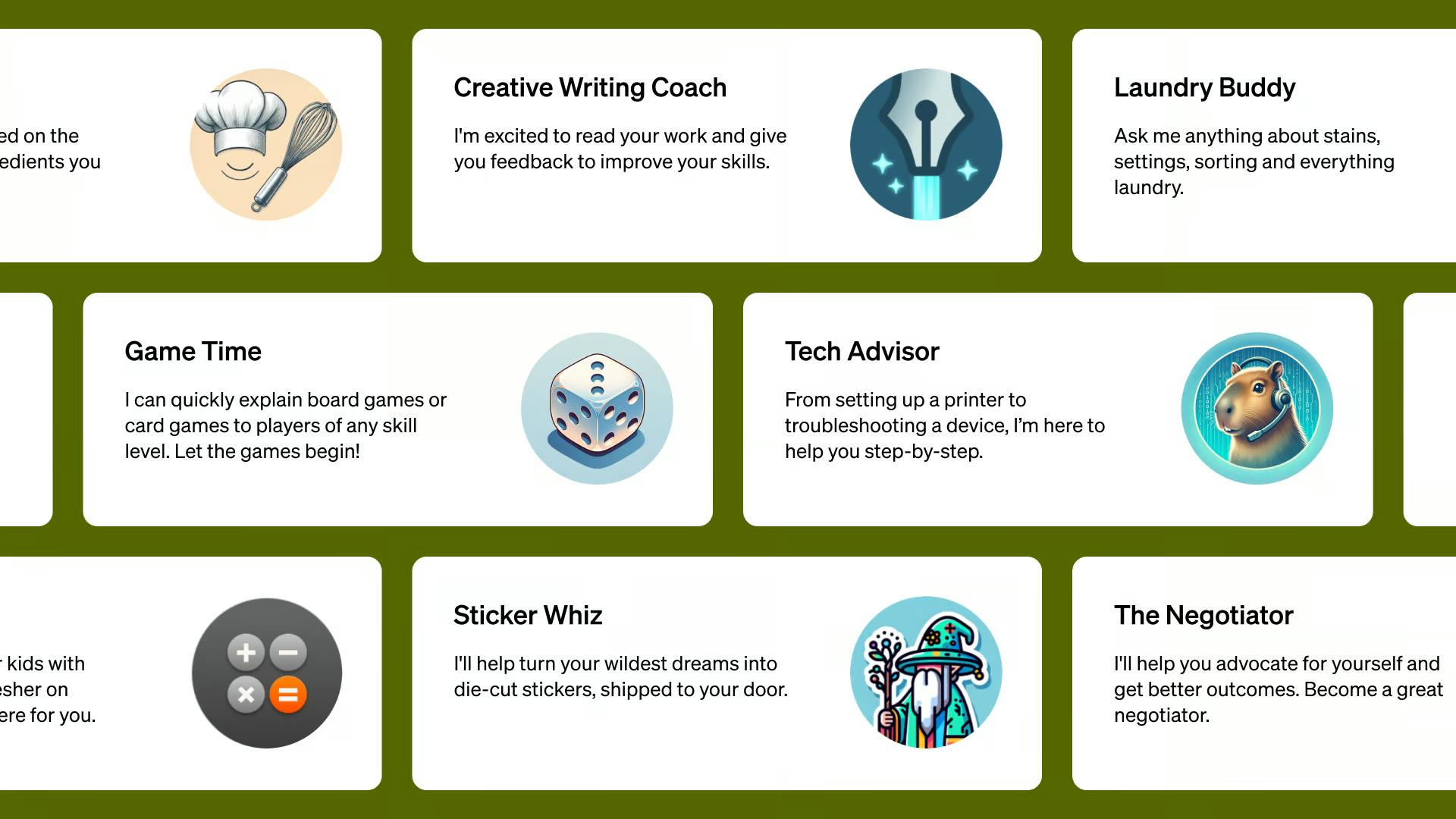
Source: OpenAI
If an LLM can be general purpose enough that simply specifying that the task one is doing is related to “SEO” or “Facebook Ad Copy”, then much of the custom work done on top provides little additional value to the user, and it would be cheaper for customers to use the general LLM directly.
Intellectual Property Issues
Jasper has asserted the copyright-free and royalty-free nature of its offering. This, however, may not be true forever, especially for AI art. Regulatory changes or legal rulings that call into question the royalty-free status of generative AI outputs may threaten Jasper’s appeal to its users. For example, as of February 2024, Getty Images has been in an ongoing lawsuit against Stability AI, for its use of Stable Diffusion, an image LLM. In fact, in December 2023, a UK court found merit in Getty’s claim and ruled the lawsuit could move on to trial.
Similarly, a lawsuit was filed in January 2023 against Stability AI, Midjourney, and DeviantArt, all image LLMs. Sarah Andersen, Kelly McKernan, and Karla Ortiz — the artists suing — claimed that these organizations have violated the rights of "millions of artists" by using five billion images from the internet “without the consent of the original artists” to train their tools. The ramifications of these types of cases could have negative implications for Jasper’s business.
Summary
Jasper’s products for text and image generation, plus its tools for project management and content optimization, enable marketers to speed up their workflow and design content for various channels at low cost. Jasper has built an application layer over advances in generative AI to lower the friction to use these models and has catered them to the content production needs of digital marketers.
As digital marketing budgets continue to increase and the quality of AI-generated outputs improves, products like Jasper may become more embedded into the general workflows of marketing departments. As this happens, however, competitors will continue to arise and pose a risk to Jasper, which must build up a sufficient moat to weather that competition. In addition, the third-party AI models powering Jasper, such as GPT-4 and Stable Diffusion, may become usable out of the box for marketers without additional customization, jeopardizing their business model.









